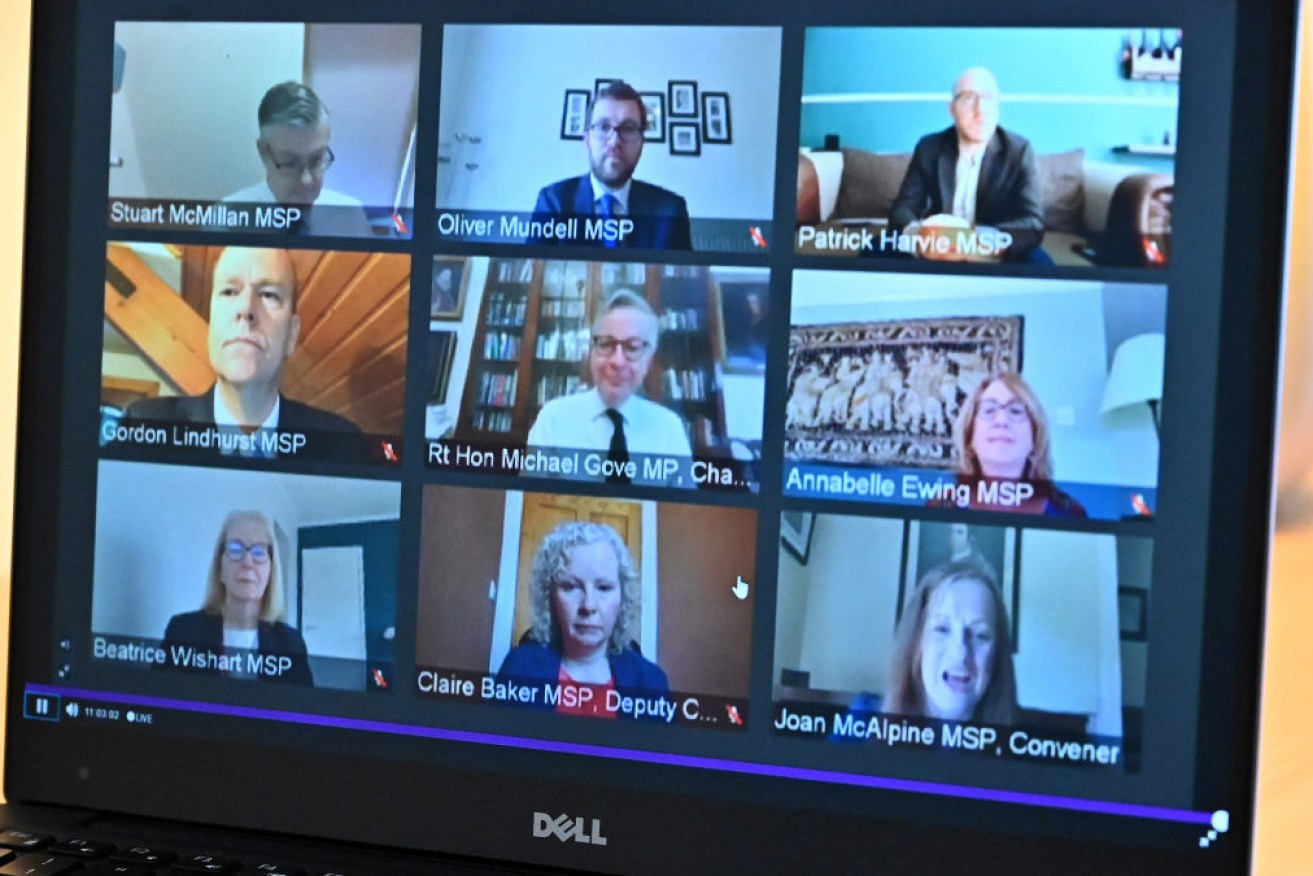At swords’ length: Could a virtual parliament do the job?


From Scotland to Spain, nations around the world have adapted to the pandemic with virtual parliaments. So why not Australia? Photo: Getty
It’s commonly said that the width of the centre table of Westminster-style parliaments – the UK, Canada, New Zealand, and Australia – is the length of two swords. The idea, presumably, is that those standing at the dispatch box won’t be able to stab those on the other side or vice versa, even if, as we must assume, they desperately want to.
Leaving aside all the reasons this seems unlikely (what if they just brought a longer sword? Or, you know, stretch out their arm?,) this charming factoid captures one of the advantages Westminster democracy claims over presidential systems: those with executive power must stand before their political opponents to answer for their decisions. They must, in short, present themselves for scrutiny.
That question of parliamentary presence, and why it matters, is suddenly very much in contention.
Prime Minister Scott Morrison has cancelled the parliamentary sitting fortnight scheduled for August on medical advice, due to concerns about COVID-19.
Labor has called for a cross-party working group to find a way to reconvene parliament as soon as practicable. Yet it has stopped short of endorsing calls for a ‘Virtual Parliament’: a parliamentary sitting where MPs and Senators attend remotely via video link.
Manager of Opposition Business Tony Burke told ABC Radio National that he wasn’t in favour of the idea. “Face to face,” Burke insisted, “makes a difference.”

There appears to be no constitutional impediment to holding parliament online. Photo: AAP
But just what is that difference? And assuming there is no constitutional impediment to a virtual parliament, is that difference enough to outweigh the need for both safety and scrutiny?
Mr Burke suggests “we would lose something” through virtual sittings. That worry, that ‘telepresence’ lacks something that only physical presence can provide, is a surprisingly old one.
E.M. Forster’s 1909 short story “The Machine Stops” envisages a future in which everyone sits alone in their rooms, communicating with people across the world through a vast global communications network called ‘The Machine.’
Yet the hero, a young man named Kuno, begs his mother to come visit him in person instead. “I see something like you in this plate, but I do not see you. I hear something like you through this telephone, but I do not hear you.”
Kuno longs for human contact unmediated by a machine. After months of constant Zoom meetings many of us can probably relate. There is something missing in this sort of communication – otherwise we couldn’t make sense of the outrage of families in the US who have been denied in-person prison visits after video calls were introduced instead.
Yet it’s surprisingly hard to pin down what this ‘something’ is. The philosopher Hubert Dreyfus argued that what’s missing in telepresence is connected to the mutual vulnerability that comes from sharing the same space as someone else – being within sword distance, so to speak. Authentic communication involves the possibility of being hurt.
That seems to be part of what Mr Burke is getting at in suggesting the Prime Minister should face his opponents: “For a prime minister who has made a claim, to be able to confront them face to face is a different thing.”
In that, Mr Burke has some surprising fellow travellers. The British House of Commons chamber is so notoriously cramped that only 427 of its 650 MPs can sit down at any one time. Yet Leader of the House and double-breasted suit diehard Jacob Rees-Mogg insists that a socially distanced parliament is better than a virtual one: “Politics is better done face-to-face, even if the whites of the ministerial eyes are six feet away.”
Yet Dreyfus’ claim that we have to be near each other to be vulnerable is wobbly on its own terms – had Dreyfus somehow never been insulted or even dumped over the phone? – and of limited applicability here. We do confront each other face-to-face through telepresence, even if we can’t touch (or stab) each other. Unlike Kuno, we really do see each other on our screens, seeing through the mediation.
And if you think people can’t hurt each other online: welcome! I hope you’re enjoying your first day on the internet.
The other worry is that telepresence simply lacks the necessary gravitas for affairs of state. Democracy demands our full-bodied presence, and attending the quasi-sacred space of parliament remotely would be like making a pilgrimage by Skype. It lacks a seriousness that is, in fact, the whole point.
But let’s not pretend that Question Time, an event faintly reminiscent of a kabuki play staged at an underground cage fight, would be so demeaned by remote attendance that we should simply not hold it at all.
Let’s also not pretend that physically being there makes you fully present. Remote participation deserves the name of ‘presence’ far more than sitting in the chamber doing your correspondence while someone else is speaking.
Telepresence isn’t the same as being there in body. But it’s not as bad as not being there at all. At its best it can bring us into genuine encounters with others. There’s no reason to think it can’t allow parliamentarians to do their job when the alternative isn’t available. And it might stop them worrying about the length of their swords.
Patrick Stokes is associate professor of philosophy at Deakin University and a Melbourne-based writer and broadcaster.








